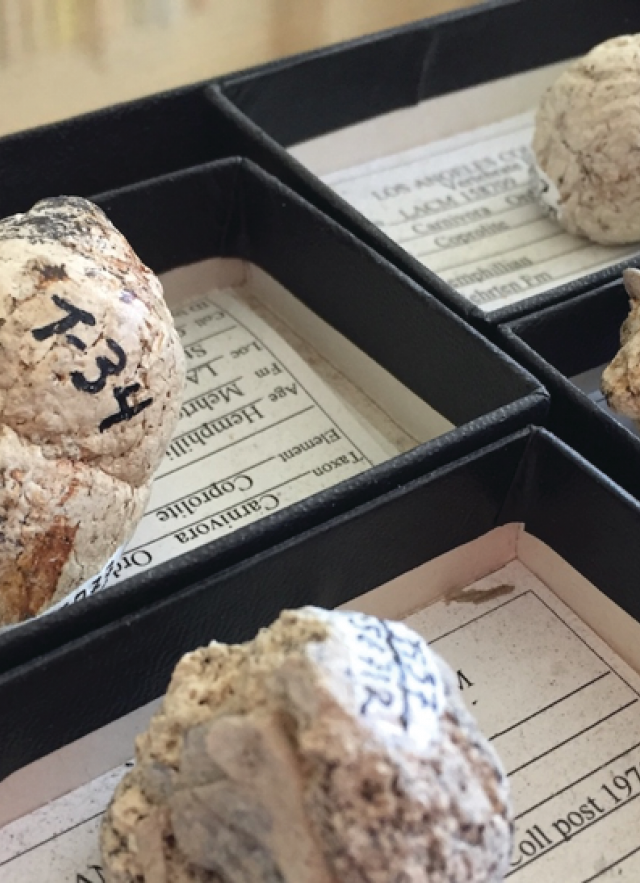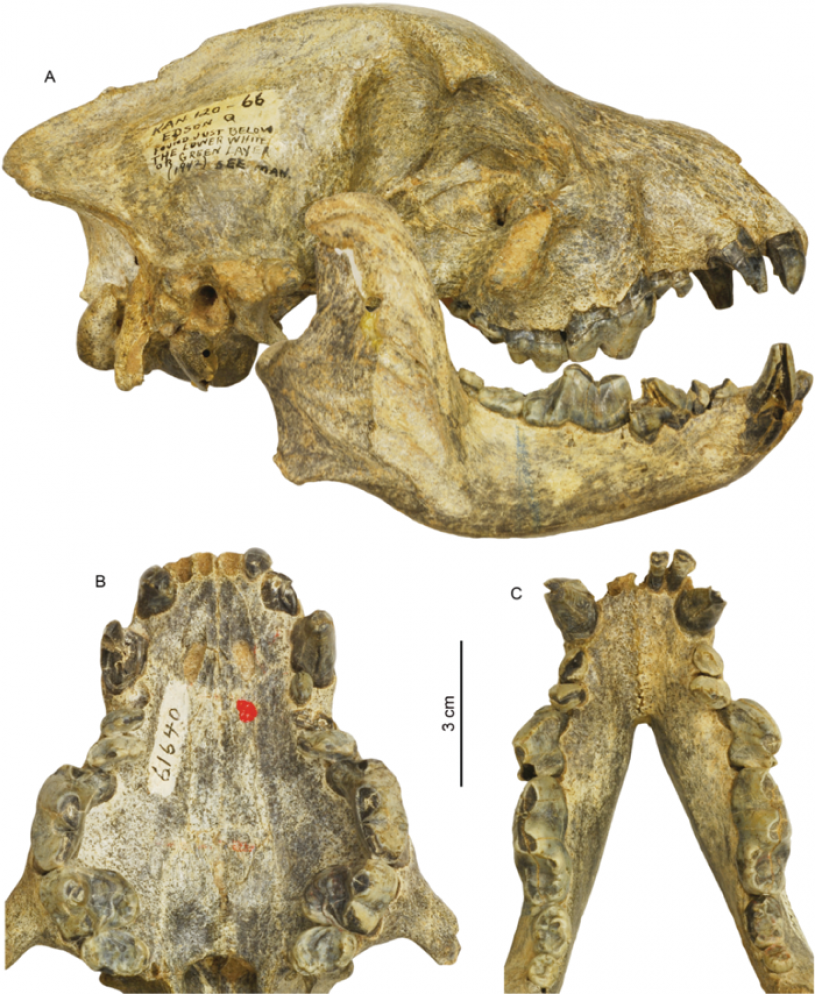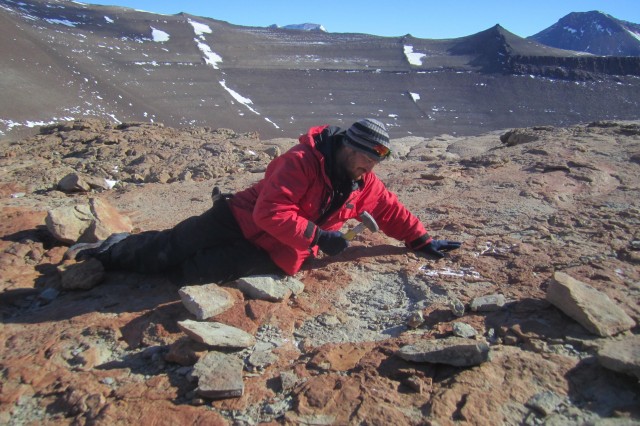The Proof Is in the Pooping
Fossilized feces help confirm the diet of extinct “bone-crushing” dogs

NHM Vertebrate Paleontology Curator Xiaoming Wang has studied extinct “bone-crushing” dogs for most of his career. These ancient canines lived throughout North America about six million years ago, and their powerful, heavyset jaws earned them their (totally metal) nickname. They’re unlike any dogs or wolves we see today, but they do have something in common: they pooped. And for the first time ever, we managed to find some very old, very fossilized feces of theirs.
Coprolites (fossil poop) are exceptionally rare. Bones are more likely to be preserved than soft tissues (or feces), and yet fossils of bones are still pretty hard to find. The 14 coprolites in this study were found at a fossil site in central California where we find lots of bones from bone-crushing dog species Borophagus parvus, so that’s most likely who made them. And these fossilized feces have a lot to tell us, as gross as that may sound.
First, we can tell based on how they were found at the fossil site that the poops occurred in clusters from multiple individuals and multiple, um, “dropping events,” which could mean that these dogs were marking their territories, a behavior we see today but has never been documented in extinct carnivores before.

And that’s just the most basic of the defecation information. We haven’t gotten into them yet. These fossils still have the partially digested bones of six-million-year-old meals, such as a bird limb bone and a large mammal’s rib, among others. And while we can’t determine which exact species these dogs ate, we can estimate the rough size of the prey based on some of the bones’ measurements. From the looks of it, these bone-crushing dogs regularly dined on animals many times bigger than themselves, which suggests they were hunting in groups to accomplish this. Social hunting might also explain why they ate so much bone: if mealtime is a competitive sport, there’s really no time to pick and choose each bite carefully.
These fossils still have the partially-digested bones of six-million-year-old meals, such as a bird limb bone and a large mammal’s rib, among others.
Xiaoming Wang, NHM Vertebrate Paleontology Curator
Bone-crushing dogs went extinct around the time the Ice Age was setting in, about two million years ago. The special bone-eating role they played in these ancient ecosystems was never replaced, so their absence may have had an outsized effect on the ecosystems they were a part of. Discoveries like these coprolites help us get a clearer picture of what life was like and how ecosystems functioned long before humans arrived on the scene. Not bad for some old poop!
